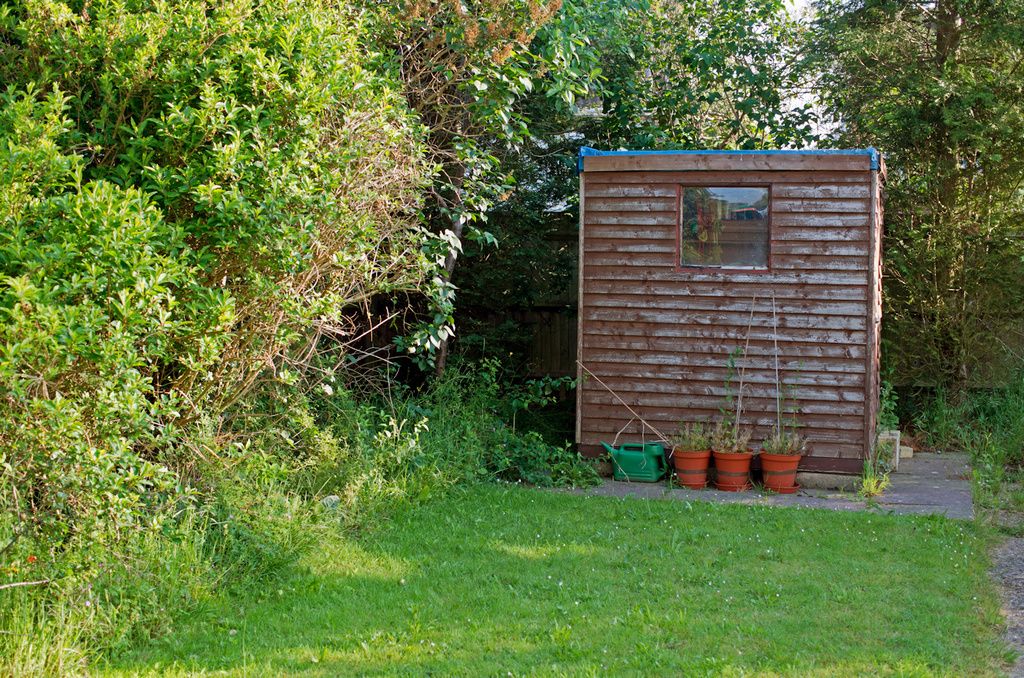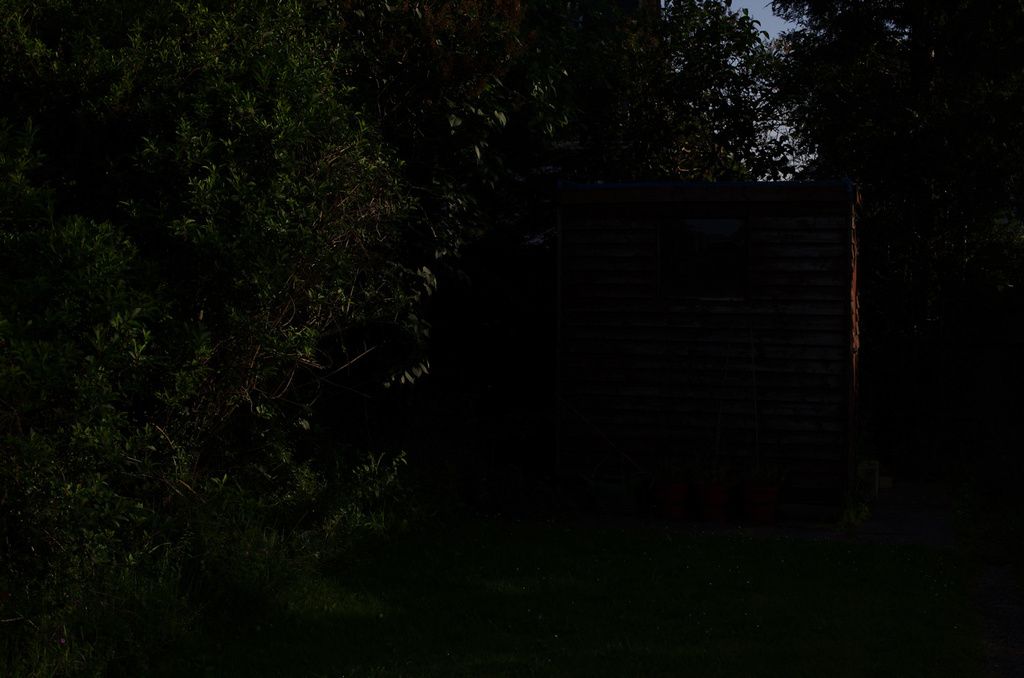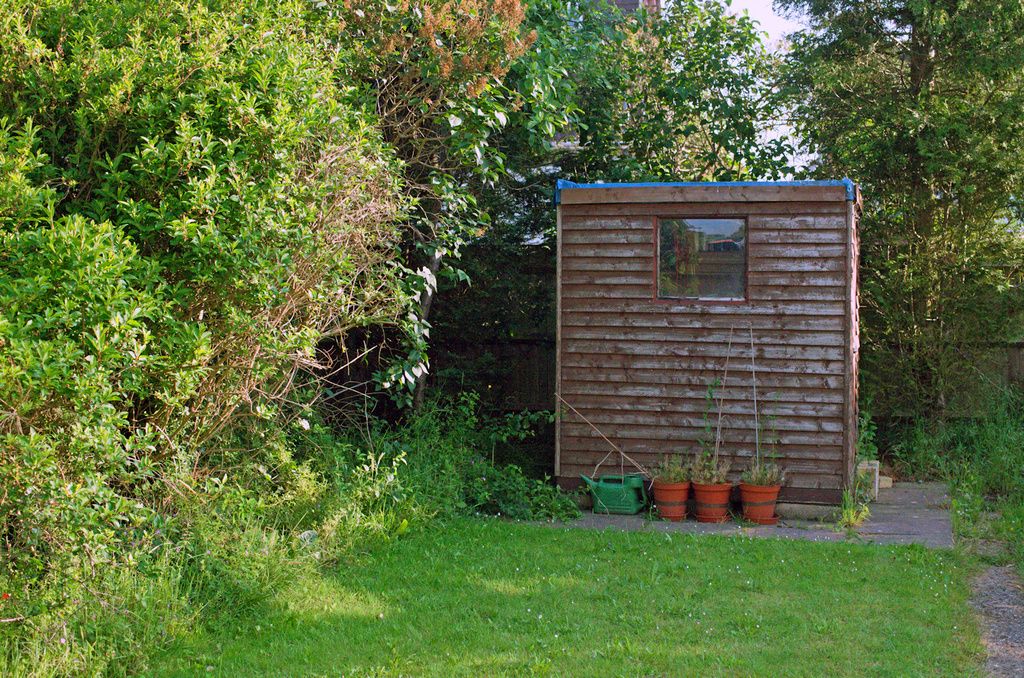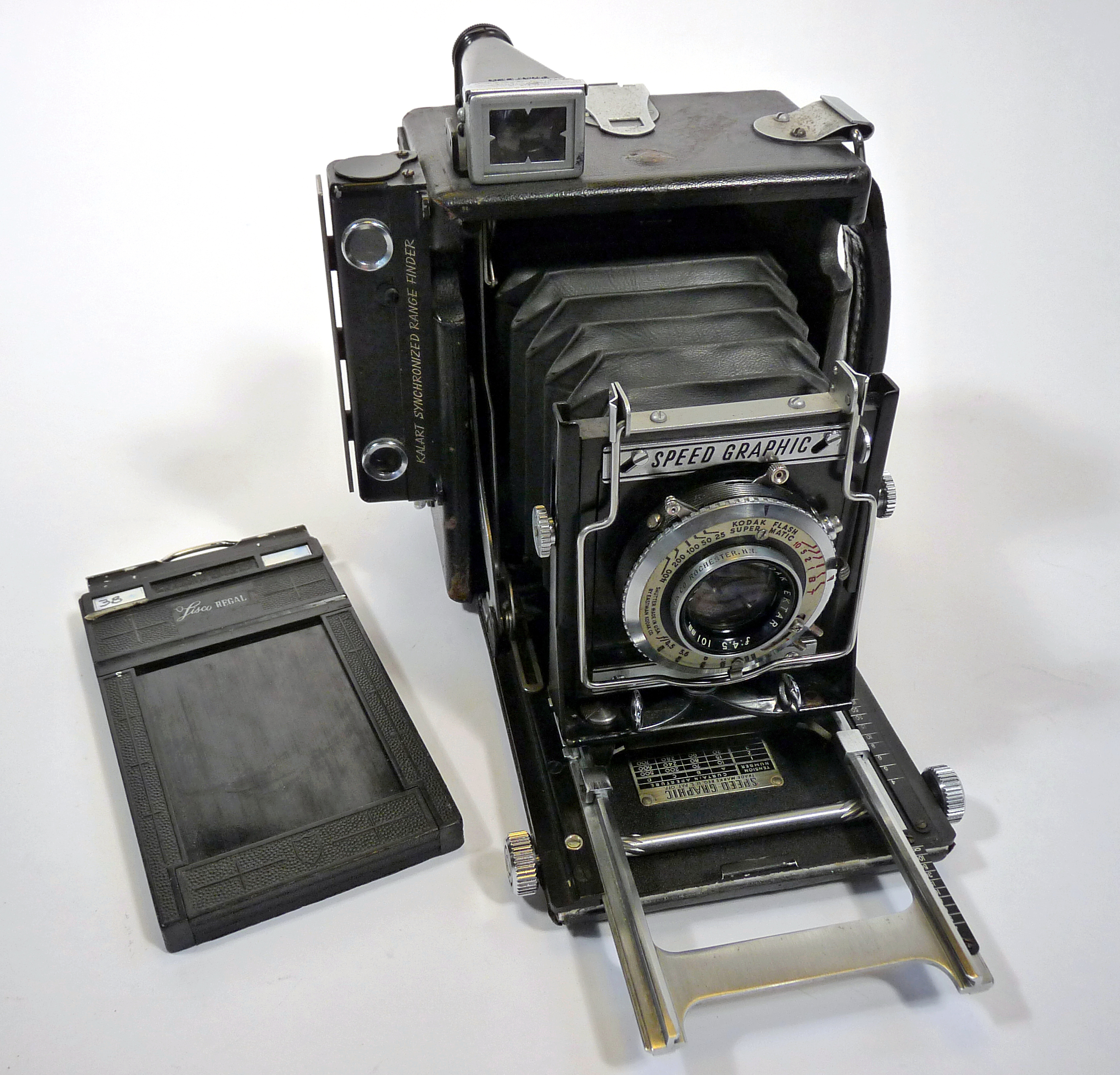Now that I've read the piece, Dan, that you provided...
Using that logic, it's a classification, not a fact, that my Nikon D7000 is a camera. To this layperson, that distinction between a classification and a fact is far less than unhelpful.
It would be far more helpful and far less disingenuous if the scientific community would admit that their facts are often nothing more than opinions because the lay community then would be able to more effectively apply the scientific information in the real world.
Bringing this back full circle to the discussion about the definition of exposure, put 100 people in a room who have never held a camera. Explain to them that their only controls of exposure are shutter and aperture. Put another 100 people in a room who have also never held a camera. Explain to them that they have three controls of exposure: shutter, aperture and ISO value. Then send those two hundred people out to take photos. I'll bet my last dollar that the second group of people will be able to make better exposures on average than the first group of people. And that's, frankly, all I care about, not the so-called accurate definition.
Results 41 to 60 of 63
Thread: Exposure?
-
6th June 2016, 02:58 AM #41

- Join Date
- May 2012
- Location
- northern Virginia suburb of Washington, DC
- Posts
- 19,064
Re: Exposure?
Last edited by Mike Buckley; 6th June 2016 at 03:26 AM.
-
6th June 2016, 04:06 AM #42
Re: Exposure?
There is another facet that a photographer must factor into the image... The subject lightness and darkness.
We, as photographers shoot the light that is being reflected from the subject, not the light than is falling on the subject.
We measure the light with exposure meters, either built-in the camera or hand held. Some of us are pretty good at guestimating the exposure. Especially, us older photographers. I was a photographer for five years before I owned an exposure meter and I can still do a pretty good job of selecting the f/stop and shutter speed without the aid of an exposure meter.
There are two types of exposure meters and they are used in different ways.
Reflected light meters measure the light being reflected from the subject (pretty cool the way this type of meter is named ). These can either be hand held or built-in the camera.
). These can either be hand held or built-in the camera.
Incident light meters measure the light falling on the subject. These are almost always hand held. You need to have the meter in the same light as the subject or total image.
The meter can only give you an indication of the exposure - you often need to run the information provided by the meter through the computer between your ears to get the correct exposure.
-
6th June 2016, 05:12 AM #43

- Join Date
- May 2014
- Location
- amsterdam, netherlands
- Posts
- 3,182
- Real Name
- George
Re: Exposure?
Sorry Philip, you didn;t get it. I do agree with what you said in a former post.
So again. In photography we use exposure as a WANTED value. It's selected before the shutter opens and is based on your iso settings or film sensitivity.Much confusion arises (in many areas of life) because words that have perfectly good and simple definitions are used incorrectly, and some people cannot be bothered to change their bad habits.
And for those who mentioned the exposure value as a quantity, again in photography it's a wanted value based on 100 iso. Based on a ev of 0 meaning an aperuture of 1, a shutter speed of 1 and iso 100.
If you use 200 iso, you have to increase that value with one, if you use 400 iso with 2, if you use 800 iso with 3.
This post is also adressed to the others who think you're right.
George
-
6th June 2016, 05:24 AM #44

- Join Date
- May 2014
- Location
- amsterdam, netherlands
- Posts
- 3,182
- Real Name
- George
Re: Exposure?
Dan,
Make 2 pictures, one with the right exposure and one with a 3 stop underexposure. You can't correct the last one.
George
-
6th June 2016, 06:42 AM #45
Re: Exposure?
I believe we are approaching this elephant from different directions.
Fine, the button is called exposure compensation. Now, if you use it and check the EXIF of the resulting image you will find that the value you set is referred to as Exposure Bias or EV and in some cases Exposure Bias (EV).
I will continue to use EV since it is the value used by the camputer or compera in managing the data of the raw file. We do not, after all, name the other values affecting exposure by the name of their control like aperture ring or shutter speed dial.
-
6th June 2016, 07:49 AM #46
Re: Exposure?
Going along with the misuse of terms as stated in this experiment, and assuming it suggests that the second group will produce more acceptable images, the suggested outcome could well be right, but the explanation of that lies in the fact that the experiment is unfair, because the first group has been given less information:-
"Explain to them that their only controls of exposure are shutter and aperture." - this is perfectly correct. However, they should also be told, "Sometimes your chosen exposure settings for a shot might give an image that is too dark; but not to worry, a digital camera has a control called ISO - increasing that will brighten the image for you, so that you can keep those same exposure settings for that shot."
Armed with that simple bit of extra knowledge, it is likely that the first group will make just as many acceptable images as does the second group, but they will also have the advantage of a clearer and more accurate basic understanding of what it is that they are controlling and what the camera's controls do. That is without anyone having to go into the depths of the science and measurements of light and electronics.
Cheers.
PhilipLast edited by MrB; 6th June 2016 at 07:59 AM.
-
6th June 2016, 08:45 AM #47

- Join Date
- May 2014
- Location
- amsterdam, netherlands
- Posts
- 3,182
- Real Name
- George
-
6th June 2016, 09:06 AM #48
-
6th June 2016, 09:21 AM #49

- Join Date
- Feb 2012
- Location
- Texas
- Posts
- 6,956
- Real Name
- Ted
Re: Exposure?
Thank you!
I was never talking about the units of exposure compensation, only the name of the control.Now, if you use it and check the EXIF of the resulting image you will find that the value you set is referred to as Exposure Bias or EV and in some cases Exposure Bias (EV).
I will continue to use EV since it is the value used by the camputer or compera in managing the data of the raw file. We do not, after all, name the other values affecting exposure by the name of their control like aperture ring or shutter speed dial.
In view of the increasing silliness of our exchanges, I am bowing outing. Been interesting.
A parting shot:
"Many current cameras allow for exposure compensation, and usually state it in terms of EV (Ray 2000, 316). In this context, EV refers to the difference between the indicated and set exposures. For example, an exposure compensation of +1 EV (or +1 step) means to increase exposure, by using either a longer exposure time or a smaller f-number.
The sense of exposure compensation is opposite that of the EV scale itself. An increase in exposure corresponds to a decrease in EV, so an exposure compensation of +1 EV results in a smaller EV; conversely, an exposure compensation of −1 EV results in a greater EV." Glurk
https://en.wikipedia.org/wiki/Exposu...ensation_in_EV
Just above that, it actually mentions some rare cameras that DO have your "Exposure Control (EV)":
https://en.wikipedia.org/wiki/Exposu...EV_on_a_camera
Bertam might not warm to that control which reduces the actual exposure as it's setting in EV is increased.
And since "some medium-format cameras from Rollei (Rolleiflex, Rolleicord models) and Hasselblad allowed EV to be set on the lenses", I very much doubt that the definition of EV is a scientific curiosity not normally found in photographic circles
Last edited by xpatUSA; 6th June 2016 at 11:03 AM.
-
6th June 2016, 09:22 AM #50
Re: Exposure?
Oh dear! I must follow Ted's noble and humble example and recant. Increasing ISO brightens an image and therefore it must increase exposure. It is a wonderful sunny day here and it just occurred to me that, as the Sun moves in a curved path across the sky every day, it must be orbiting the Earth every 24 hours.
Really sorry folks.....I'll get my coat.....
Cheerio.
Philip
-
6th June 2016, 10:09 AM #51

- Join Date
- May 2014
- Location
- amsterdam, netherlands
- Posts
- 3,182
- Real Name
- George
Re: Exposure?
You really don't want to understand it.
Physical you're right. Exposure is the light falling on the sensor/film. It's done and you can measure it, if you're clever.
In photography it's a wanted value based on the sensitivity of the film/sensor. Do you understand the difference between a measured value and a wanted value? It's a basic understanding in measurement and control technology.
Did you ever use a lightmeter?
Did you ever correct a 1,2 or 3 stop underexposed image?
Did you ever correct a 1,2,3 stop overexposed image? That's possible too.
Did you ever work with the guidenumber of a flash?
Did you ever hear of the sunny 16 rule?
And much more.
George
-
6th June 2016, 10:21 AM #52

- Join Date
- Feb 2012
- Location
- Texas
- Posts
- 6,956
- Real Name
- Ted
-
6th June 2016, 11:21 AM #53
Re: Exposure?
Thanks for reminding me, Ted. I meant to upload a reply to that challenge before I left the thread. These are quick and dirty examples of my garden shed this morning:
1. Normal camera exposure:

2. Under-exposed by 5 (yes, FIVE) stops:

3. Number 2 after Auto recovery in Adobe Camera Raw and a few tweaks in PaintShop Pro:

The shots were handheld, hence the slightly different framing. The camera and the PC software were set to no sharpening or noise reduction. The last image at full size is quite noisy (but it is equivalent to ISO 6400). The files should still have their EXIF data, if you want to see the exposure settings, etc.
Cheerio.
Philip
-
6th June 2016, 11:29 AM #54

- Join Date
- Feb 2012
- Location
- Texas
- Posts
- 6,956
- Real Name
- Ted
Re: Exposure?
Cool. In my cameras, the ISO setting is passed in meta-data to the raw converter which applies the appropriate multiplier to the review image. Arvo Jagel has written a utility where you can go into the X3F raw file and edit various tags including the one for the ISO setting.
P.S. Can't read the EXIF . . .
-
6th June 2016, 01:37 PM #55

- Join Date
- May 2014
- Location
- amsterdam, netherlands
- Posts
- 3,182
- Real Name
- George
-
6th June 2016, 03:15 PM #56
Re: Exposure?
EV is a term which I believe started with the Rollei company (Rolleiflex Twin Lens Reflex cameras). You could use the camera's built-in meter to gain an EV value.
The EV value was a combination of shutter speed + f/stop + film speed (then measured in ASA) which would give you a "correct" exposure. You could then adjust any of the three values and the other values would adjust correspondingly. The camera was locked on a specific EV setting. You would need to disconnect the EV system to increase or decrease the exposure.
This is very much the same as today's Programmed Exposure Mode, except in that the Programmed Mode will automatically select a shutter speed + f/stop which will be appropriate for the light conditions and the ISO selected.
NOTE: all meter results should be run through the computer residing between the photographer's ears in order to be sure of a correct exposure...
As in the old Rolleiflex EV system. you can easily adjust the f/stop or shutter speed and the corresponding shutter speed or f/stop will be selected. As in the Rollei system, you can adjust the ISO (ASA) and the other two values will be selected.
As in the Rollei EV system, you need to input information (called exposure compensation in DSLR systems) in order to change the exposure which the camera automatically chooses (in P, APERTURE PRIORITY OR SHUTTER SPEED PRIORITY MODES). When you shoot in manual mode, you select the shutter speed and f/stop and changing one of those values will not change the other value.
So one EV value equates to changing the aperture by one stop or doubling or halfing the shutter speed at any given ISO.
I often shorten this and call it one-stop of exposure control despite that the exposure control may be done by adjusting the shutter speed...
Thus if I shot an image at 1/100 second @ f/8 using ISO 100 and it is underexposed by one stop (or 1 EV), I could do the following:
Open my aperture to f/5.6 - allowing in twice the light
or
Slow my shutter speed to 1/50 second - allowing in twice the light
or
Boost my ISO to ISO 200 and not adjusting shutter speed or f/stop which will double the sensitivity of the sensor and require only half the amount of lightLast edited by rpcrowe; 6th June 2016 at 03:25 PM.
-
6th June 2016, 03:56 PM #57
Re: Exposure?
This just shows how amazingly broad the dynamic range of a modern camera is. One of the reasons I rarely shoot HDR any more is that I can get a decent image just by using what my camera has captured, rather than jumping through hoops with the multiple exposure / software approach.
-
6th June 2016, 04:40 PM #58

- Join Date
- Feb 2012
- Location
- Texas
- Posts
- 6,956
- Real Name
- Ted
Re: Exposure?
I believe that the original EV value was given by Ev = log(2) (N^2/t), based on IOO ASA, and the film speed was simply used to adjust the result, thus accounting for film speed. That appeals to the pedantic mind because, once again, ISO gets removed from a basic concept

<>
Ev (underexposed) = 12.64Thus if I shot an image at 1/100 second @ f/8 using ISO 100 and it is underexposed by one stop (or 1 EV), I could do the following:
Ev = 11.61, so just over twice the light . .Open my aperture to f/5.6 - allowing in twice the light
Ev = 11.64or slow my shutter speed to 1/50 second - allowing in twice the light
Until this thread got going, having never used an exposure meter, I never realized the inverse relationship between Ev (absolute EV) and exposure! Duh.
Theoretically the sensitivity of the sensor is not changed but I know what you mean.or
Boost my ISO to ISO 200 and not adjusting shutter speed or f/stop which will double the sensitivity of the sensor and require only half the amount of light
It's not unusual to find such a huge gap (Ev inverse relationship) in my knowledge; a similar situation to back when I was designing and building transistor and op-amp circuits for a living but knew little about tubes (valves) because they were pasada.Last edited by xpatUSA; 6th June 2016 at 04:46 PM.
-
6th June 2016, 04:56 PM #59
-
6th June 2016, 05:29 PM #60

- Join Date
- Feb 2012
- Location
- Texas
- Posts
- 6,956
- Real Name
- Ted

 Helpful Posts:
Helpful Posts: 

 Reply With Quote
Reply With Quote

